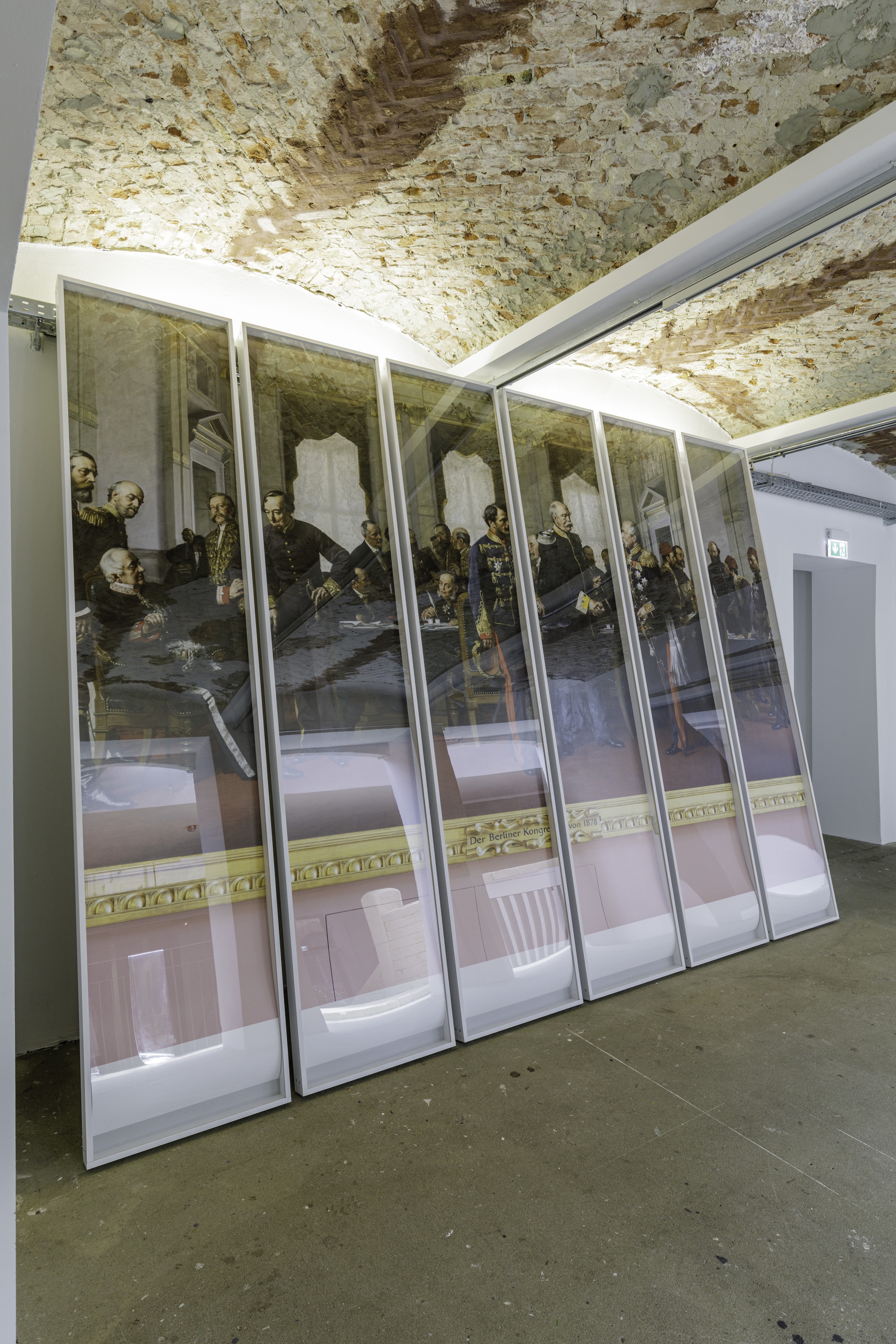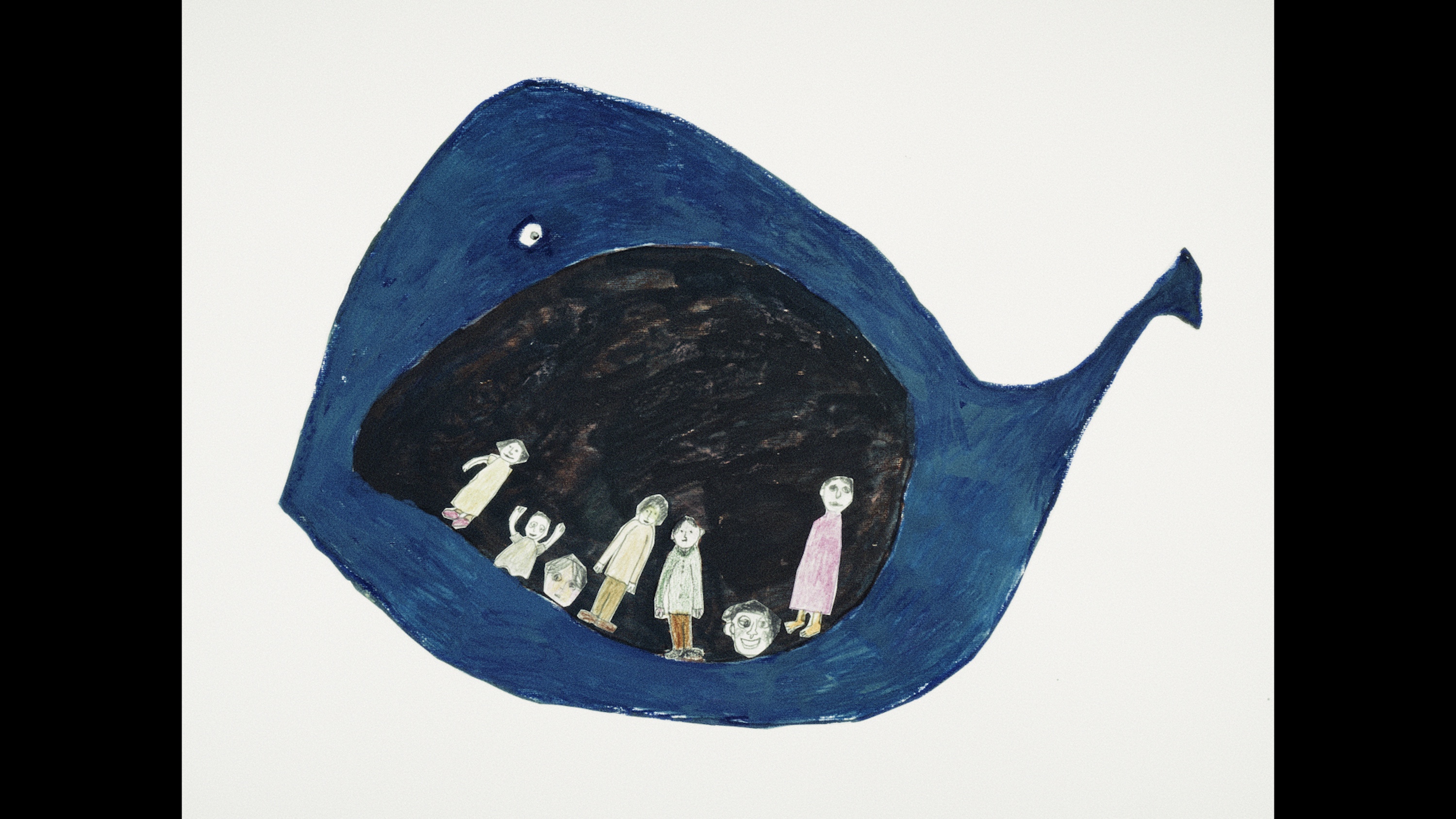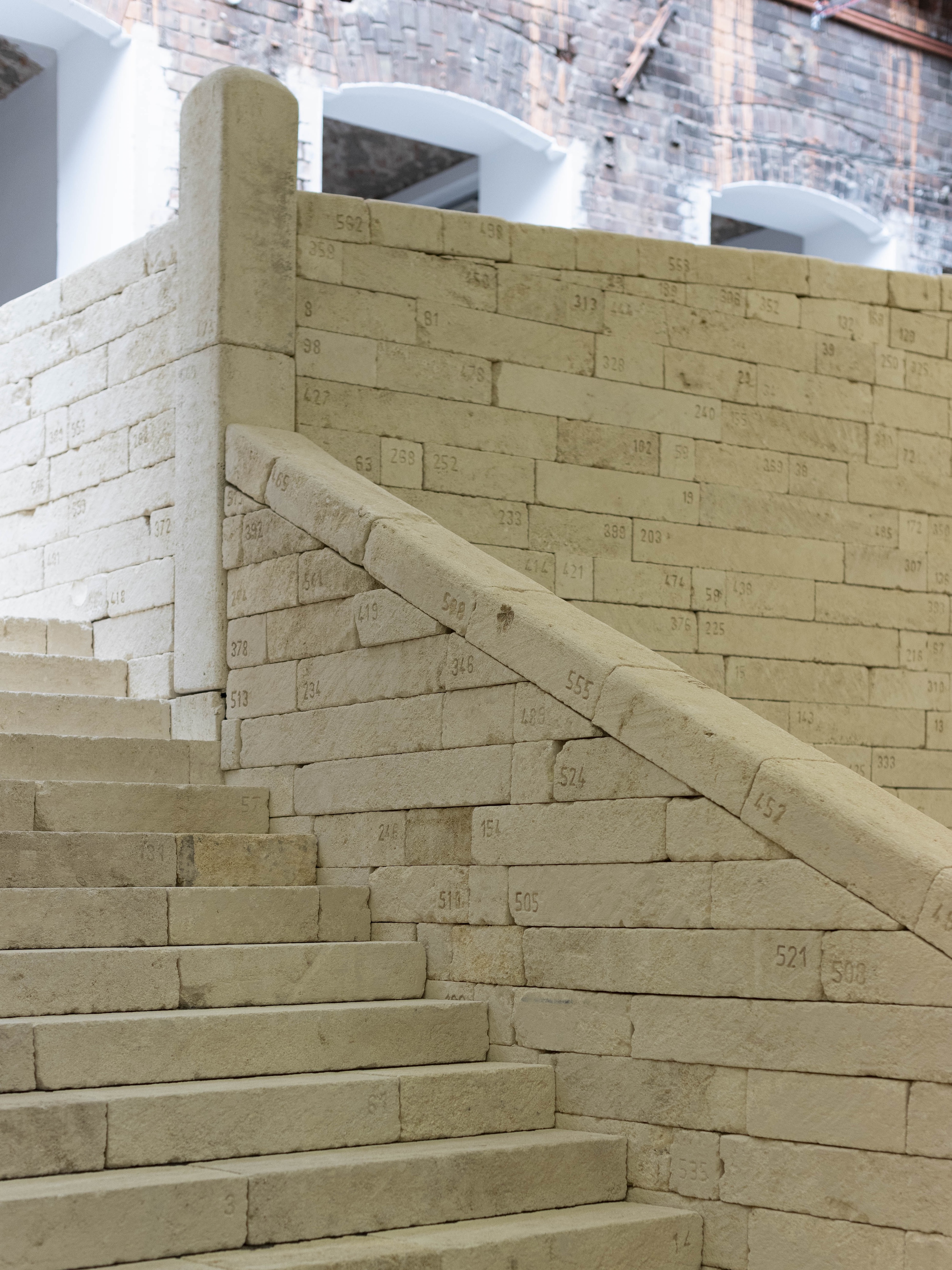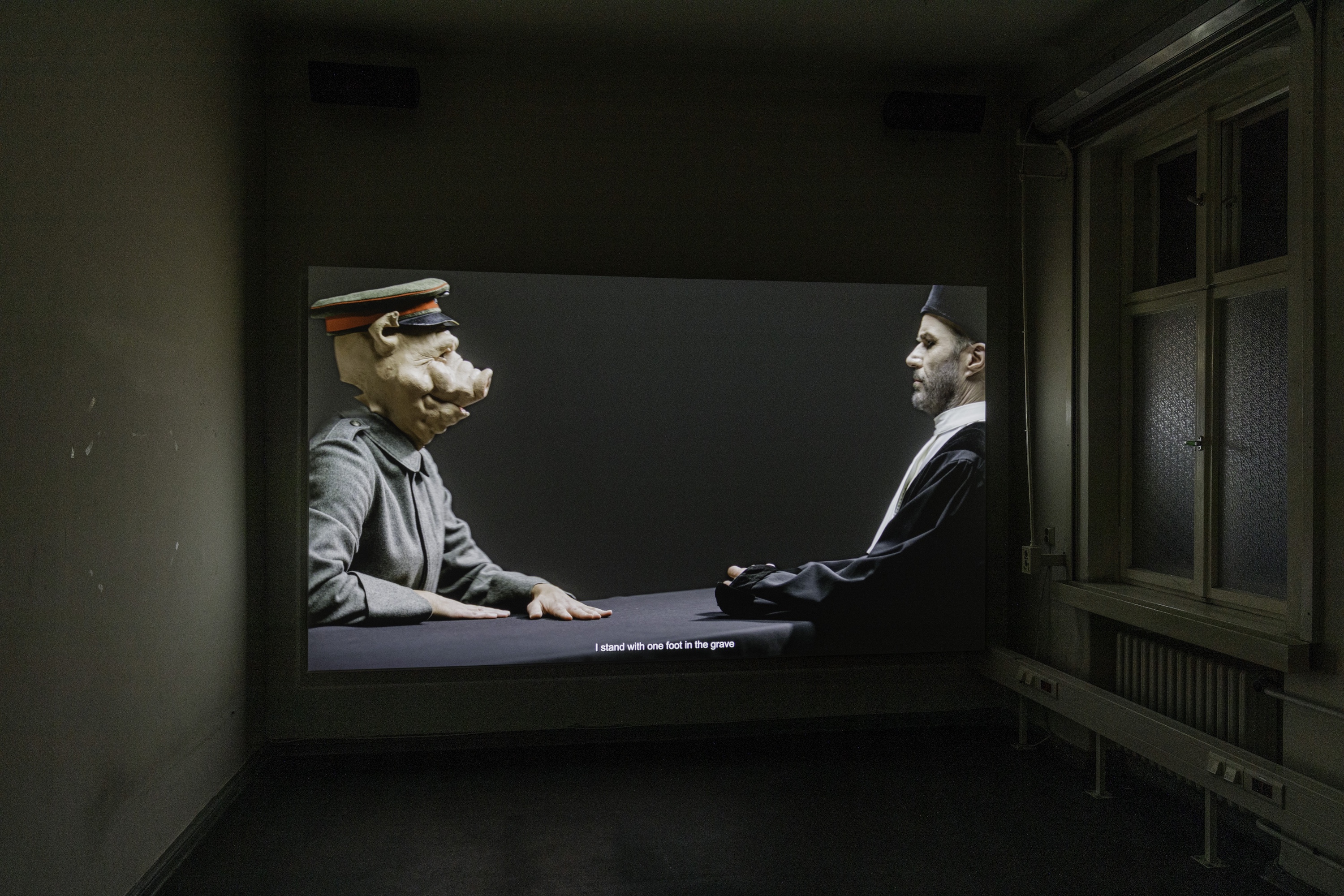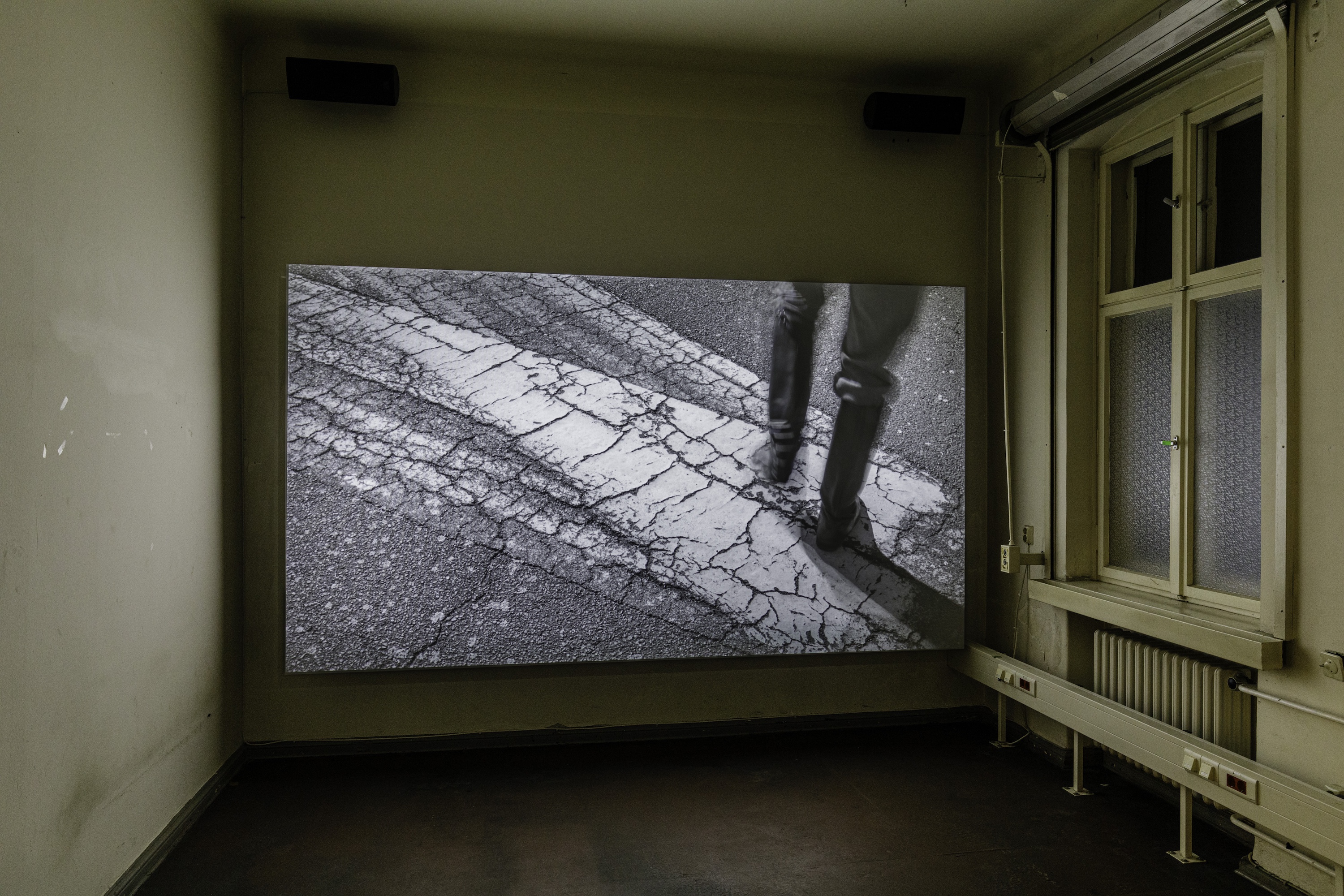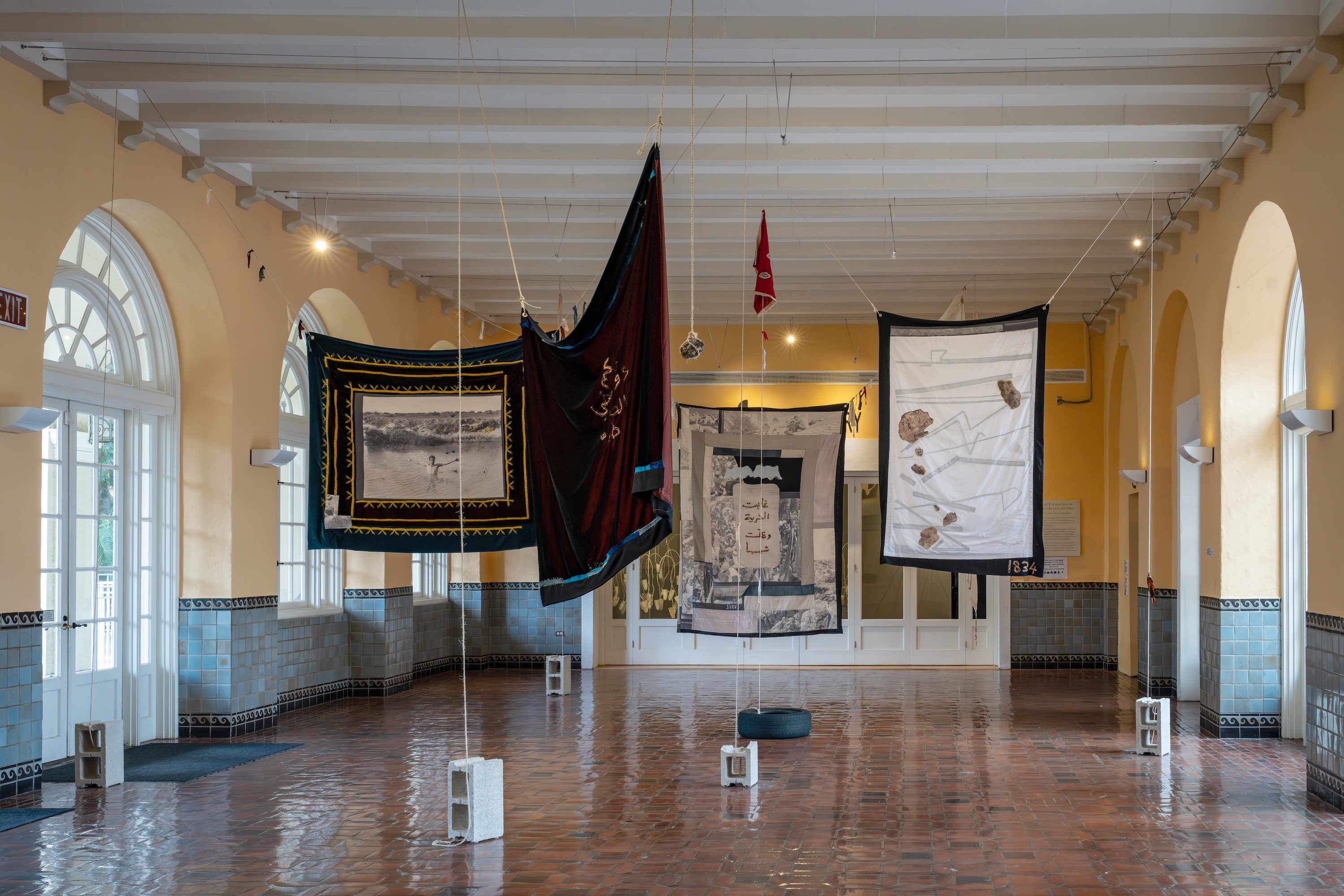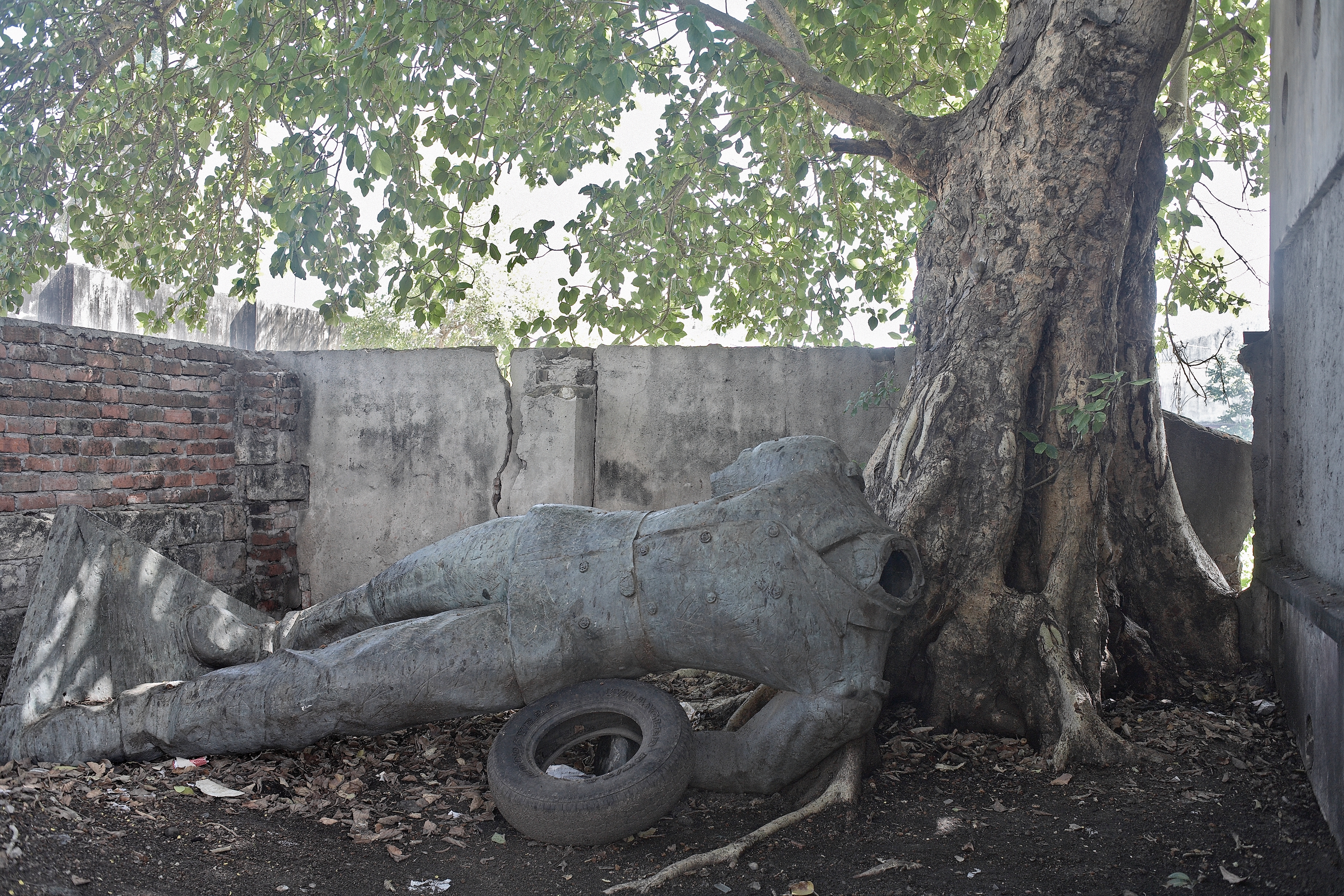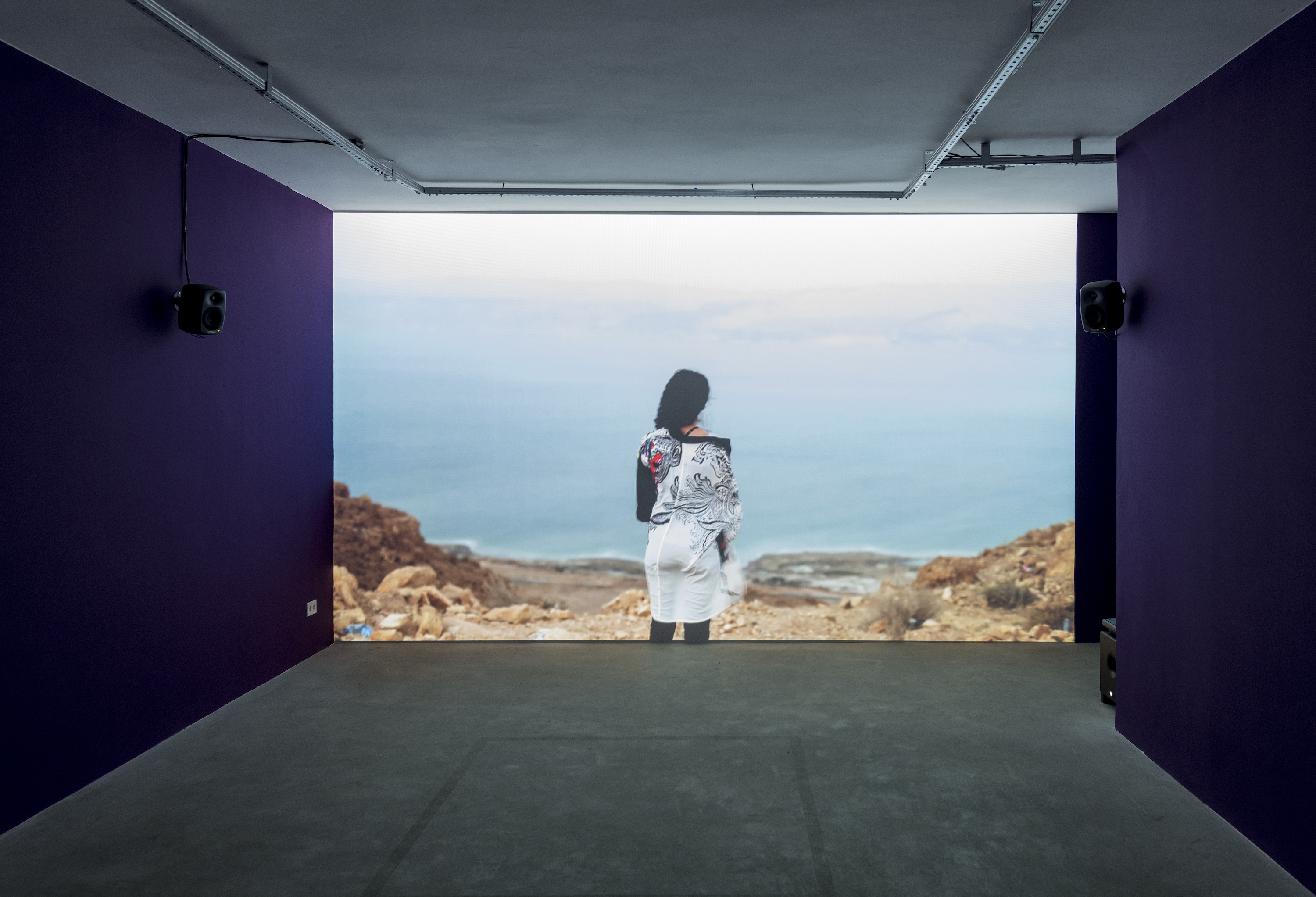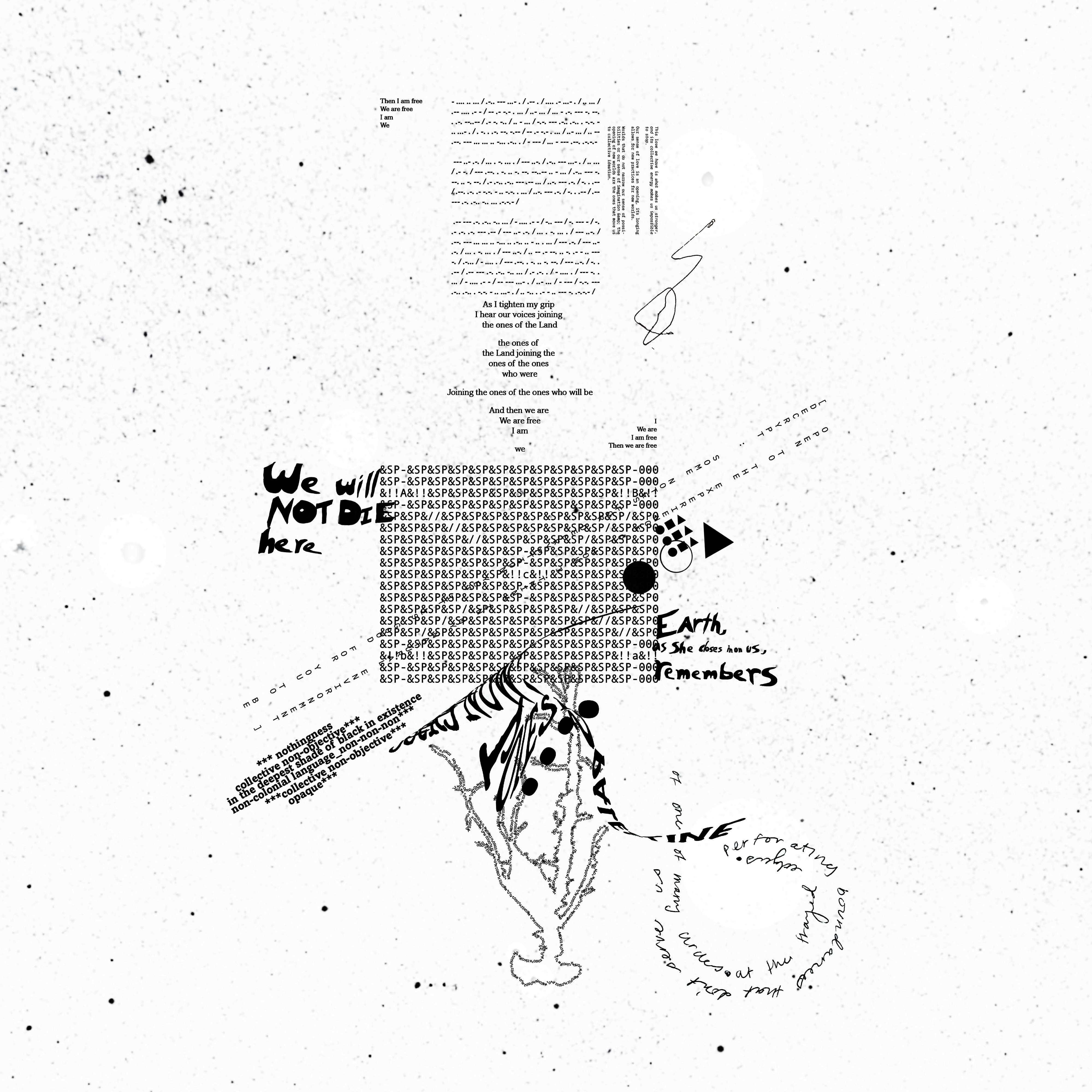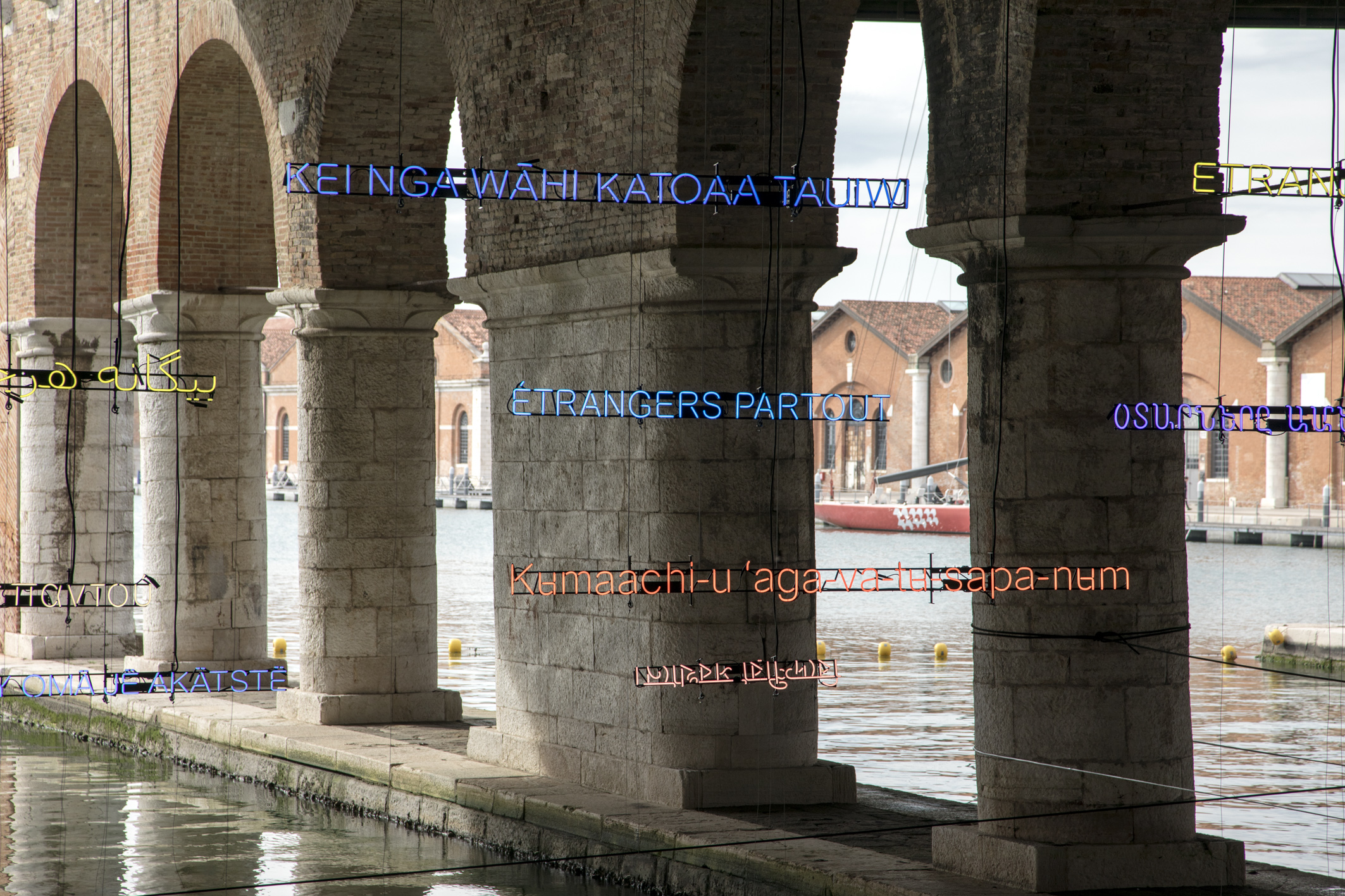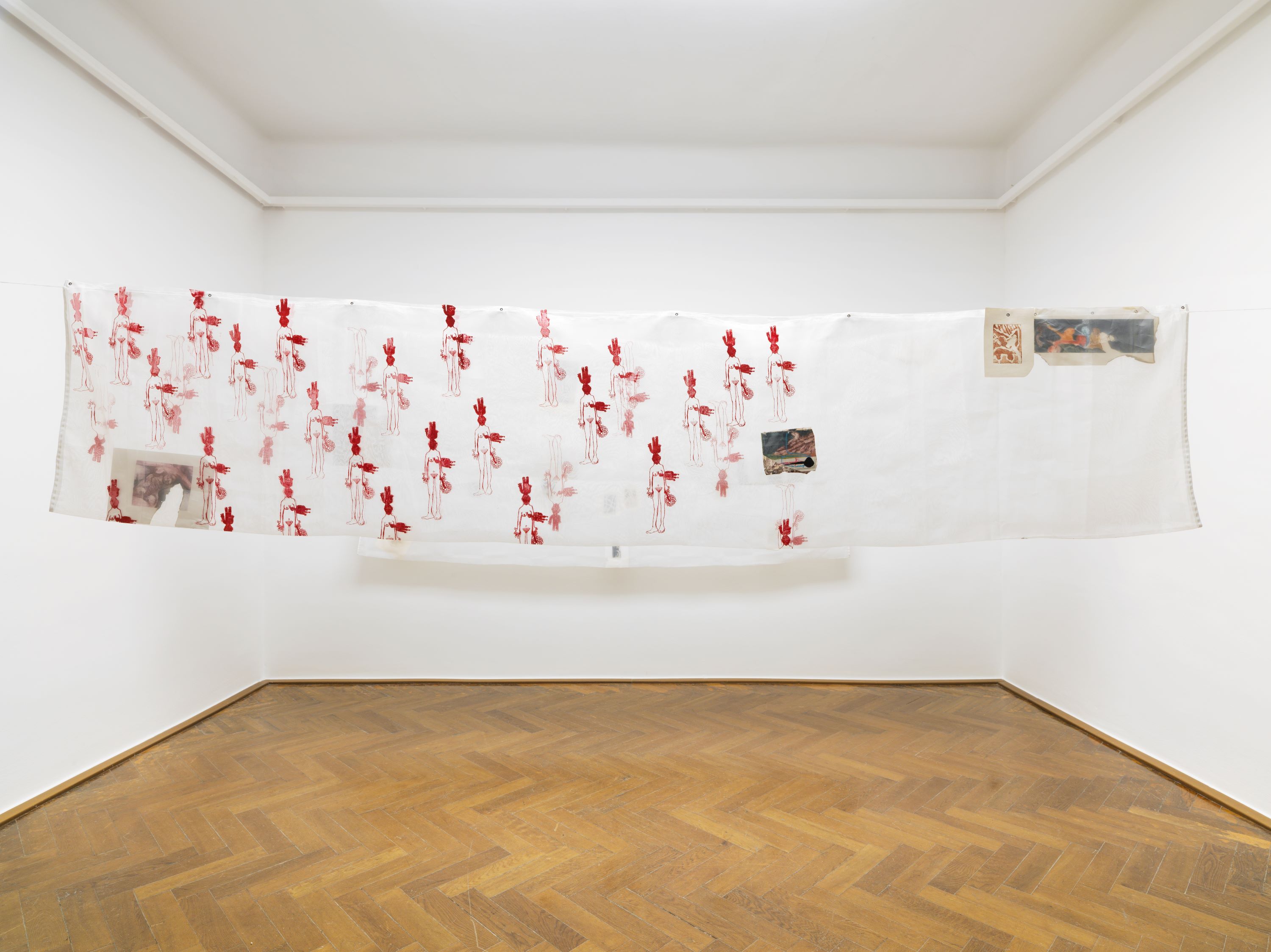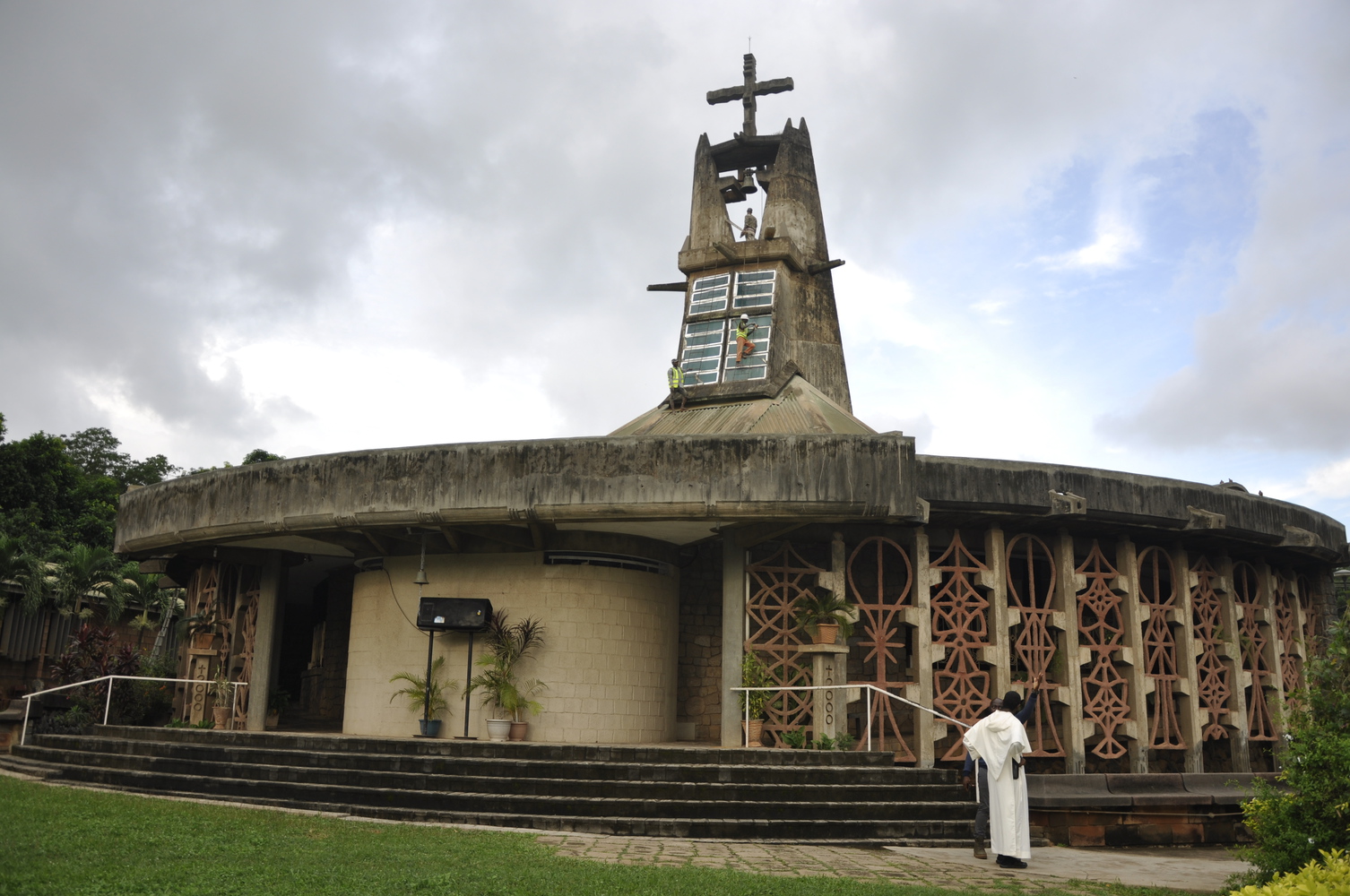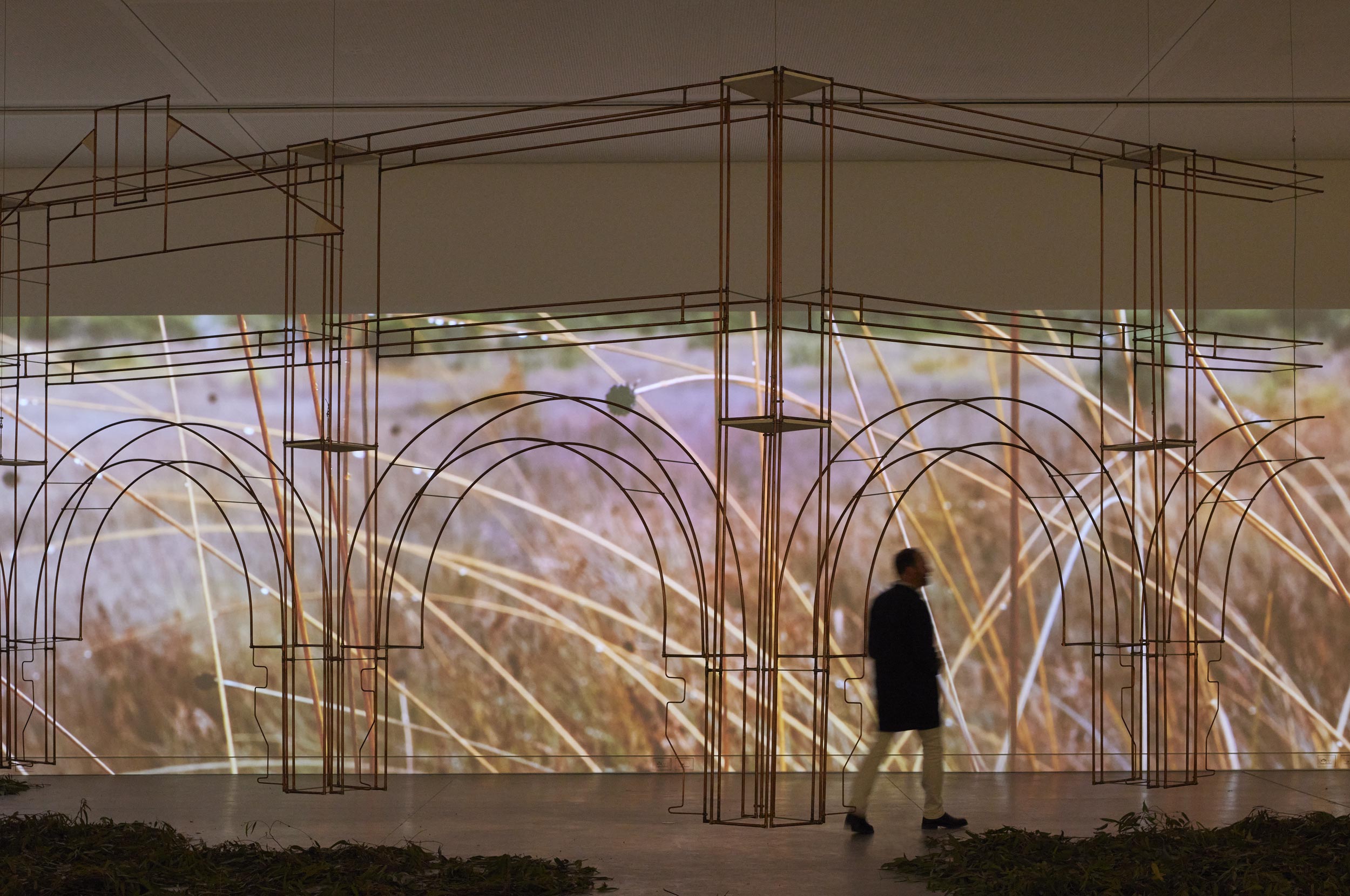June 14–September 14, 2025
The terms for the 13th Berlin Biennale are set out in the first room of the KW Institute for Contemporary Art. On display is Armin Linke’s photographic installation depicting Anton von Werner’s 1881 painting The Congress of Berlin as well as a series of his preparatory sketches for the piece. This summit of imperial European powers resulted in the Treaty of Berlin, which carved up the Balkan region and established the “status quo” with “respect to the Holy Places” of Jerusalem and Bethlehem, guaranteeing access “without distinction of creed.” Absent from the Congress, but germane to this exhibition, were representatives of the communities who would be governed by that “status quo.”
Linke’s large-format photograph of the painting—divided into six narrow frames leaned against the wall—also connects the biennale to Berlin’s City Hall, in which the painting hangs. In this building, in January 2024, the Senate of Berlin considered and eventually rejected as unconstitutional a proposal by the former senator for culture, Joe Chialo, that would have made a commitment to the disputed IHRA definition of anti-Semitism a prerequisite for cultural funding; a measure met with significant protests from the Berlin cultural sector.1 This is the climate in which the biennale unfolds, and which might explain why its organizers preferred not to announce the participating artists until the day of its opening.
Yet the prominent place given to Linke’s work suggests, from the start, that the biennale will take seriously the idea, expressed in its title, of evasion and allusion as a curatorial principle and political strategy appropriate to that climate. Histories of atrocity, political repression, and ethnic cleansing—from Myanmar to Srebrenica to Nagaland—are presented in an almost encyclopedic display of human cruelty, as are the tactics of subversion that confronted them. What is conspicuously absent is any direct address of Gaza.
Initially, this glaring omission appeared as a cynical strategy for maintaining the moral gravity and political relevance of the exhibition without any of the risk that might come from contending with what in Germany has become taboo. However, as the visitor progresses through the show, a series of oblique, often brilliantly conceived references to Palestine accumulate alongside a world of clever and devastating artistic responses to conditions of political violence. Collectively, they conspire to make the powerful claim that the reason we are looking for something that doesn't appear is because we already know what’s going on, and that’s on us.
Once one embraces the absences that propel the elisions, dissent, and black humor that structure the exhibition, they begin to appear everywhere. The tidy floral sequences that form a pictorial garden assembled from drawings, collages, and photos by everyone from the Roma-Hungarian artist OMARA Mara Oláh to Fredj Moussa to Hannah Höch and Steve McQueen, are arrayed around a missing image by the poet and artist Nyi Pu Lay. He was best known for his satirization of Chinese capital investment in Mandalay and died in hiding after the 2021 military coup that installed a junta in Myanmar. The painted floral studies made during his isolation cannot be retrieved.
The possibilities for subversion allowed by language’s inadequacy to the task of capturing reality—political or otherwise—is explored throughout the show. In Gernot Wieland’s film Family Constellation with a Fox (2025), featuring a delightful clay figurine bromance between Walter Benjamin and Karl Marx, and a deft psychoanalytic play on linguistic substitutions as devices for both concealing and approximating trauma, the artist’s voiceover attributes to Ingeborg Bachmann the quote: “failure of language breaks the world open.”2
The psychoanalytic register is intensified in Grupa Spomenik’s video Towards the Matheme of Genocide (2009)—included in Milica Tomić’s installation Is There Anything in This World You Would Be Ready to Give Your Life For? (2025)—which features long whiteboard attempts to diagram the Srebrenica Massacre in Lacanian terms. At the center of one of the boards, written in capital letters in the circle with a large ‘J’ for “jouissance”, is the word “GENOCID.” One of the discussants comments that jouissance is the “breaking of all relationships” that govern the order of meaning-making. It is “the end of the world,” and “if it appears” it is “the sign of death.” Yet, curator Zasha Colah’s answers at a tense press conference where the sole question was about the organization Strike Germany and whether she encountered any “state repression … in light of the genocide in Gaza,” were telling. Seeming to rigorously avoid repeating the word “Gaza,” she responded: “genocide is a legal term.” The exhibition does not mistake itself for a court, despite Tomić’s installation being in the former courthouse where Karl Liebknecht was tried for leading an anti-war protest in 1916. Instead, it probes the absurdities by which the language of legal systems renders people non-existent or beyond the protections of the law.
Seen in this light, Palestine appears everywhere in the show. Nowhere is this more apparent than in Simon Wachsmuth’s From Heaven High (2025). The film takes as its premise the famous 1920 work by John Heartfield and Rudolf Schlichter, Prussian Archangel, which suspended a dummy of a WWI German officer with a papier-mâché pig’s head from the ceiling of the First International Dada Fair in Berlin. The work resulted in the artists being charged with defaming the German army, although they were later acquitted. In the second act of the film, a German judge in court regalia questions a figure wearing a pig mask in a costume nearly identical to the one in Heartfield and Schlichter’s piece. Playing with Dada’s obsession with the arbitrariness of language and updated with glitchy AI-like voices, the pig explains where he came from: “from the river, over the mountain, to the sea.” The judge presses him, asking, “Which river? Which sea?”
References to similarly prohibited signifiers abound in an inquiry about “keffiyeh-dada”, as do highly coded terms like “Staatsräson” and emphatic repetitions of “never again.” Eventually, the officer’s speech careens toward a pure sonic play between the German words for “fascist,” “shoot,” and “shit,” asking ultimately “whether it isn’t better to be a pig than a fascist.” This opens up a treacherous interpretive terrain. While the piece establishes myriad historical connections to Berlin Dada’s tactics for criticizing war by outflanking government suppression of political speech, the caricatures are broad enough that they could be interpreted in multiple, contradictory ways. This is, in part, the hazard of a politics of omission. On the one hand, the work mounts a clear critique of the ways in which language has come to be censored. But at the same time, the film also takes up larger, irresolvable questions that motivate the rest of the biennial: how the absences at the heart of law and language also create the room for dissent, and how, and for whom, such lacunae become meaningful.
See “Open Letter to the Berlin Senate Cultural Administration,” e-flux Notes, January 4, 2024, https://www.e-flux.com/notes/582923/open-letter-to-the-berlin-senate-cultural-administration-and-to-joe-chialo-state-minister-for-culture-and-social-cohesion.
That I wasn’t able to find the source of this quote in Bachmann’s work only adds to its effect.

